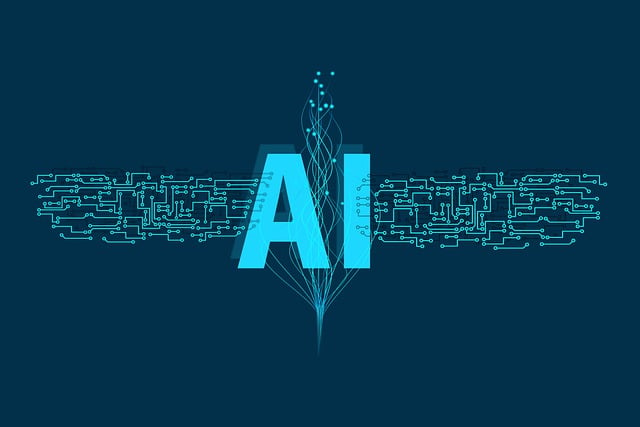
(Forbes) – Since it’s my duty as a futurist to look forward, I cover the new tech trends that will influence our digital world over the course of the following year every year.
Which technology are most popular right now? What are the most crucial trends for which corporate executives should be ready?
The ten crucial tech developments for 2023 are listed in the following.
AI Everywhere
Artificial intelligence will start to exist in businesses in 2023. Any firm will be able to take advantage of no-code AI’s capacity to develop more intelligent products and services thanks to the technology’s simple drag-and-drop interfaces.
This trend is already apparent in the retail sector. Customer-specific clothing recommendations are made by Stitch Fix using AI-enabled algorithms.
In 2023, contactless, autonomous shopping and delivery will be increasingly popular. AI will simplify the purchasing and delivery of goods and services for consumers.
Nearly every profession and every business operation across all industries will benefit from AI. The convenience trends of buy-online-pickup-at-curbside (BOPAC), buy-online-pickup-in-store (BOPIS), and buy-online-return-in-store (BORIS) will become the norm as more retailers utilise AI to manage and automate the intricate inventory management operations that take place behind the scenes.
The newest autonomous delivery programmes that retailers are testing and implementing will also be powered by AI, and more and more retail employees will need to become used to working with machines to do their jobs.
Parts of the Metaverse Will Become Real
The phrase “metaverse,” which I don’t particularly like, has come to stand in for a more immersive internet in which we will be able to work, play, and interact with one another on a constant platform.
According to experts, the metaverse will contribute $5 trillion to the world economy by 2030, and 2023 will be the year that determines the metaverse’s course for the following ten years.
The fields of augmented reality (AR) and virtual reality (VR) will develop further. The metaverse workplace is one to keep an eye on; in 2023, I think that we’ll have more immersive meeting spaces where we can collaborate, brainstorm, and create together.
Microsoft and Nvidia are actually already working on metaverse platforms for teaming up on digital projects.
In the coming year, avatar technology will also progress. If motion capture technology is used, our avatars will even be able to mimic our own body language and movements. An avatar is the presence we portray as we interact with other users in the metaverse.
Further advancements in autonomous AI-enabled avatars that can represent us in the metaverse even when we aren’t signed in to the virtual world may also be on the horizon.
To perform training and onboarding, businesses are already utilising metaverse technology like AR and VR, and this trend will pick up steam in 2023. The Nth Floor is a metaverse setting that has previously been developed by consulting firm Accenture. In order to enable potential hires and current workers to do HR-related functions without physically being present in an office, this virtual world includes copies of actual Accenture offices.
Web3
Additionally, 2023 will see a huge advancement in blockchain technology as businesses produce more decentralised goods and services.
We currently store everything in the cloud, for instance, but if we decentralise data storage and encrypt that data using blockchain, our information will not only be safer but also have novel access and analysis methods.
In the coming year, non-fungible tokens (NFTs) will be easier to use and more useful. For instance, NFT performance tickets may allow you access to backstage activities and artefacts. NFTs might represent the contracts we enter into with third parties or they could be the keys we use to interact with many of the digital goods and services we purchase.
Bridging the Digital and Physical World
The gap between the digital and real worlds is already starting to blur, and in 2023 this trend will only grow. This union consists of two parts: 3D printing and digital twin technologies.
Digital twins are virtual models of actual operations, goods, or processes that can be used to test novel concepts in a secure online setting. To test under every scenario without incurring the enormous expenses of real-world research, designers and engineers are adopting digital twins to replicate physical things in virtual environments. We’ll see even more digital twins in 2023, in everything from precise healthcare to machinery, autos, and factories.
Engineers can make adjustments and alter components after testing them in the virtual environment before employing 3D printing technology to produce them in the real world.
For instance, Formula 1 teams now gather information about racecourse temperatures and weather conditions, as well as data from sensors that are delivered during races to see how the cars change. Then, they run scenarios to make design modifications instantly using digital twins of the engines and other automotive parts to which the data from the sensors is streamed. Based on the findings of their testing, the teams then 3D print car parts.
Increasingly Editable Nature
In the future, we will be able to alter materials, plants, and even people to change their characteristics. We will be able to develop materials with brand-new properties like water resistance and self-healing powers thanks to nanotechnology.
Although CRISPR-Cas9 has been around for a while, gene editing technology will advance in 2023, giving humans more power to “edit nature” by changing DNA.
Gene editing is similar to word processing in that you can add and remove words, but you can do it with genes. DNA mutations can be fixed using gene editing, food allergies can be eliminated, crops can be made healthier, and even human traits like eye and hair colour can be changed.
Quantum Progress
A global competition is currently underway to create quantum computing at scale.
We may expect computers to operate a trillion times faster than the fastest regular processors now on the market because to quantum computing, which employs subatomic particles to generate new methods of processing and storing information.
Any country that develops quantum computing at scale has the ability to render our existing encryption practises worthless, making it possible for them to decrypt the encryption used by other countries, enterprises, security systems, and other entities. As nations like the US, UK, China, and Russia invest heavily in the development of quantum computing technology, this is a development to keep an eye on in 2023.
Progress in Green Technology
Stopping carbon emissions so we can address the global warming catastrophe is one of the largest challenges the world is now facing.
Green hydrogen, a novel clean-burning energy source with almost no greenhouse gas emissions, will continue to advance in 2023. The first significant green pipeline is being built from wind farms in the North Sea by Shell and RWE, two significant European energy firms.
The creation of decentralised power systems will also advance. Using this technique, distributed energy generation creates a network of small power producers and storage that are placed in neighbourhoods or individual homes, allowing them to function even when the main grid is down. Currently, large gas and energy corporations control a majority of the global energy market, but decentralised energy initiatives have the potential to democratise power while lowering carbon emissions.
Robots Will Become More Human
Robots will resemble humans even more in 2023, both in terms of appearance and functionality. These robots will serve as event greeters, bartenders, concierges, and senior citizens’ companions in the real world. As they collaborate with people in manufacturing and logistics, they will also carry out complicated duties in factories and warehouses.
A business is making great efforts to develop a robot that can perform human-like tasks in our homes. Elon Musk demonstrated two Optimus humanoid robot prototypes at Tesla AI Day in September 2022 and declared that the company would be ready to accept orders in the following three to five years. The robot is capable of carrying out basic duties like watering plants and lifting objects, so perhaps we’ll soon be able to have “robot butlers” to help around the house.
Progress in Autonomous System
Business leaders will keep developing autonomous systems, notably in the delivery and logistics sectors. Many warehouses and factories have already attained partial or complete autonomy.
By 2023, there will be even more autonomous cars, ships, and delivery robots on the road, as well as even more automated factories and warehouses.To sort, lift, and move items in its highly automated warehouses, Ocado, a British online supermarket that bills itself as “the world’s largest dedicated online grocery retailer,” employs thousands of autonomous robots. The warehouse also makes use of AI to position the most well-liked commodities close to the robots. The Ocado startup is now distributing to other grocery merchants the autonomous technology that powers their successful facilities.
More Sustainable Technology
In 2023, we’ll finally witness a drive towards greener technologies. We are all addicted to technology, such as our smartphones, tablets, and computers, but where do the parts come from that are used to make these devices? People will be more interested in where the rare earth materials used in products like computer chips come from and how we use them.
Additionally, we use cloud services like Netflix and Spotify, which continue to operate in big data centres that use a lot of electricity.
As consumers expect energy-efficient goods and services that are supported by more sustainable technologies, we’ll continue to see efforts to make supply chains more transparent in 2023.







